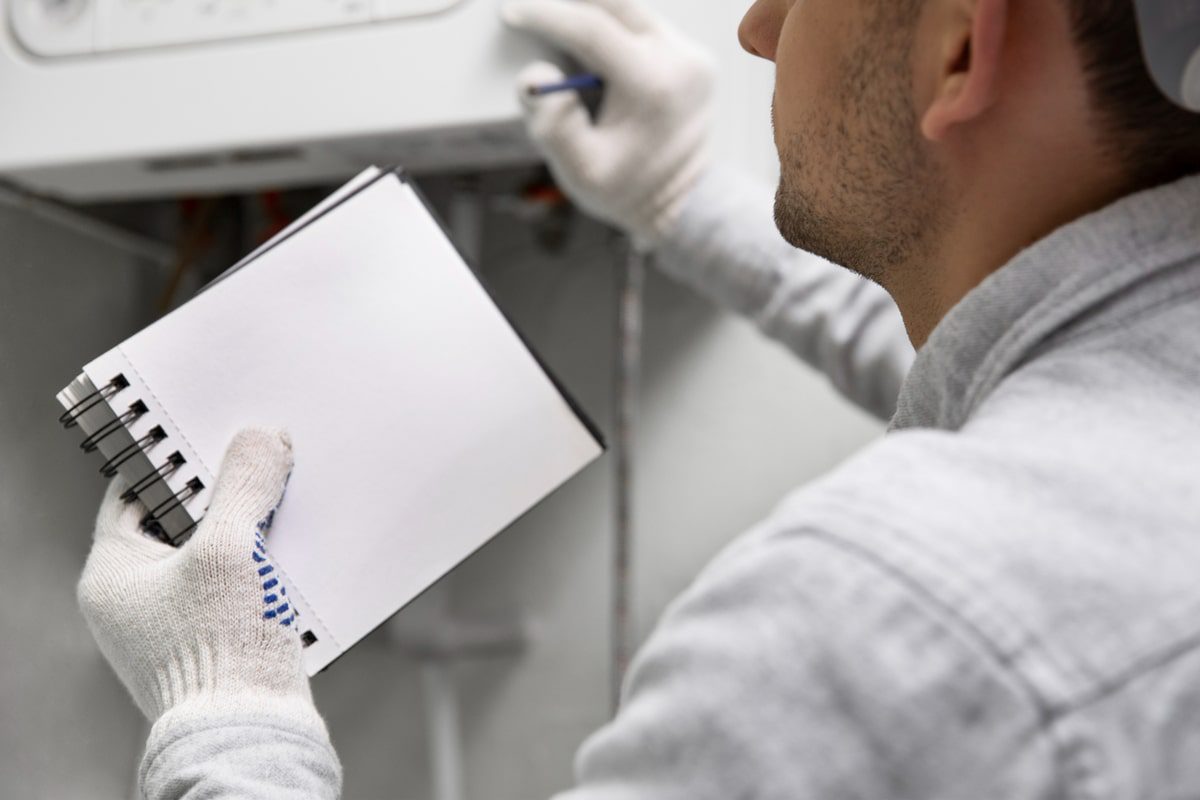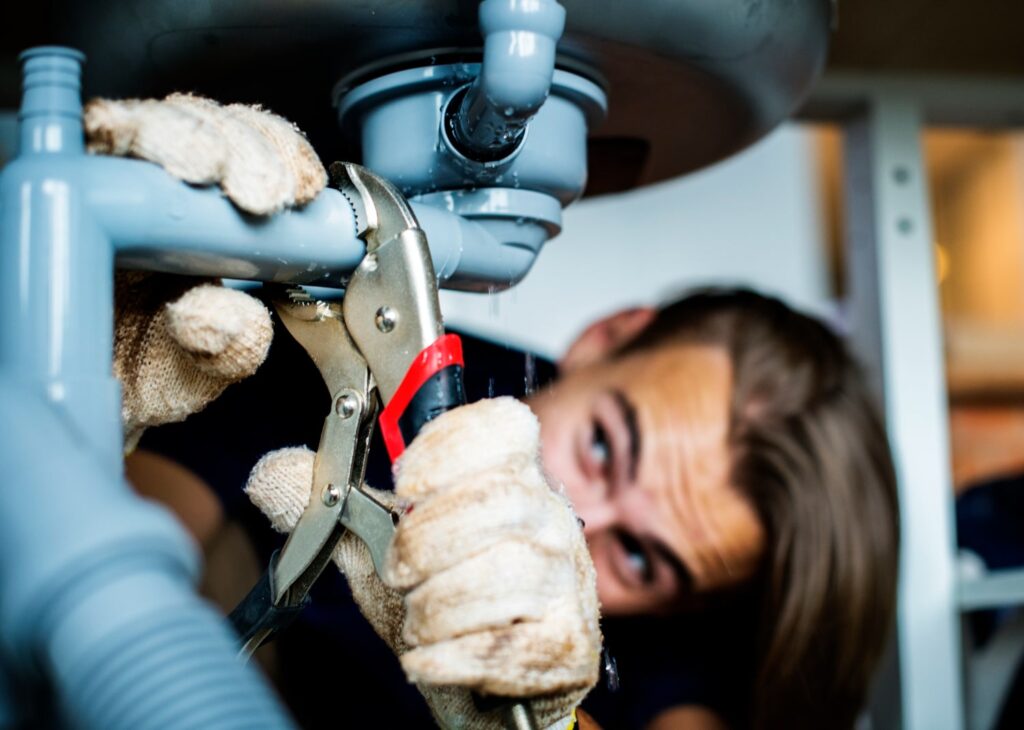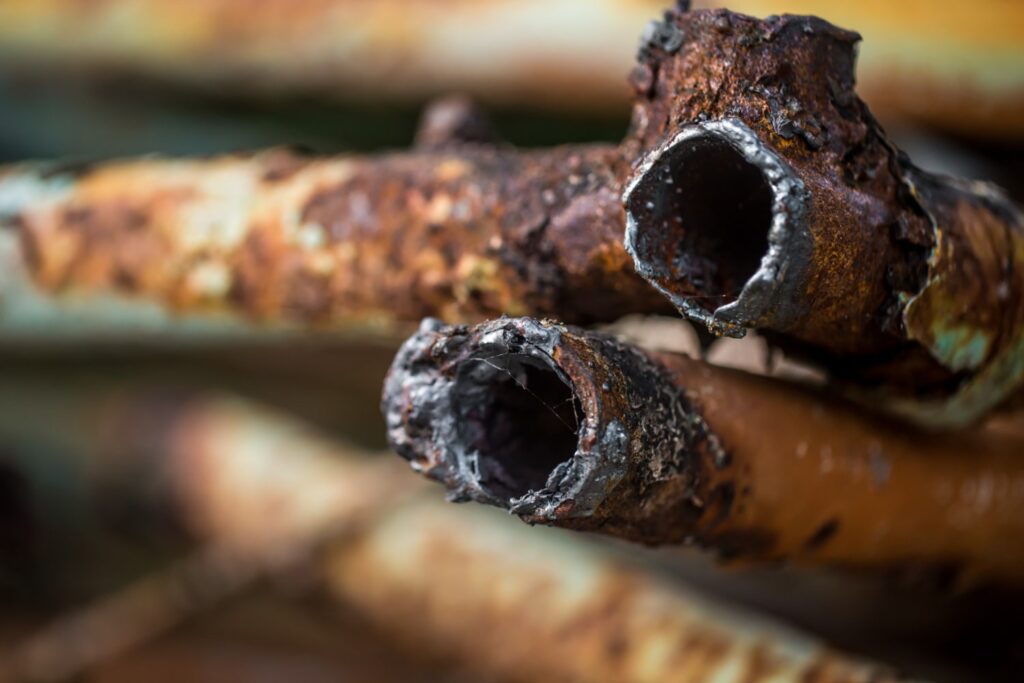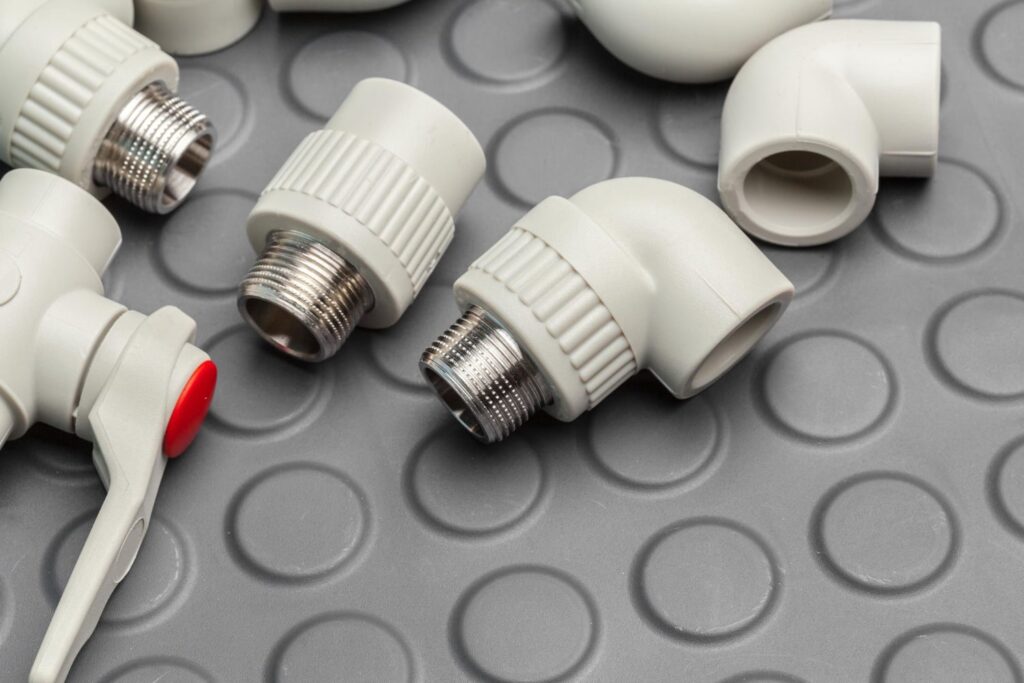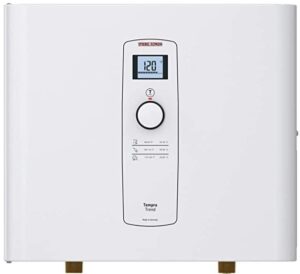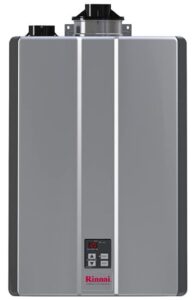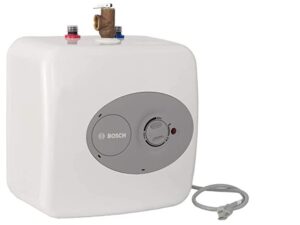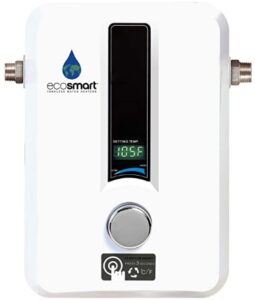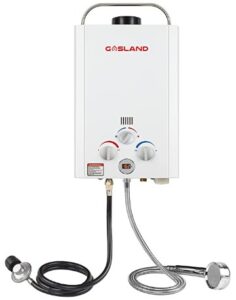Determining whether to fix or replace high-priced equipment that develops difficulties is one of the toughest aspects of appliance ownership. A good water heater should last about ten years with normal use and upkeep. But there comes a time when the cost of maintaining the current device exceeds the cost of purchasing a new one, so you have to decide if you need to replace your water heater.
In this article, we’ll show you ten ways to know if you need to replace your water heater and the top five water heaters you can purchase.
How Do You Know When to Replace Hot Water Heater?
1. Unusually High Heating Bills
In a number of ways, your water heater can affect how much your monthly power bill is. If your water heater isn’t working properly, you may notice an increase in your utility bill because of the amount of energy it uses.
Energy is used by your water heater to produce heat, which is then transferred to the water inside the tank, satisfying your household’s demand for hot water. Your utility bill will be affected by the price of these commodities, including energy and water.
Before you decide to replace your water heater just because of high electricity bills, make sure you’re not setting the temperature too high.
Your monthly energy costs will increase if you have your water heater set too high. Although some water heaters come factory-set at 60ºC, the Environmental Protection Agency (EPA) reports that most homes can get by with a setting of 45ºC to 50ºC. Standby heat losses (heat lost from the water heater to the surrounding area) can cost as much as $61 per year if the temperature is set at 50ºC.
However, if you’ve been using your water heater for a while and you experience a relatively unusual spike in your water electricity bill, then it’s possible that your water heater could be the problem.
2. Unit Too Old
How long you’ve had your water heater is a good indicator of when it needs to be replaced. The typical lifespan of a water heater is between eight and twelve years.
Water quality is an additional factor to consider when determining the lifespan of this appliance. If the product isn’t serviced and maintained regularly, it could break down long before the guarantee expires if hard water is present.
If you know how old it is, you can figure out if and when you need to replace it. A tank water heater tank has a lifespan of 6-12 years depending on the quality of care it receives. More than twenty years of use is possible with a tankless water heater.
If your water heater appears to be older than 10 years, you should start thinking about replacing it. In order to find out how old your water heater is, you’ll need to know its make and model. The serial number and the manufacturing date are sometimes located on the same tank label. If you don’t know how to read the serial number, you can find out when the water heater was made by consulting a water heater-specific web resource.
3. Leaks
Standing water surrounding the appliance or a visible leak in the water heater are both telltale signs that it’s time to replace your water heater. A leaking tank can’t be fixed, and continuing to use it puts you at risk of flooding or major failures in the near future.
However, the source of the water or leak must be determined. It is possible to fix leaks arising from places other than the tank itself, such as valves. Before replacing anything, make sure there are no leaks in the pressure overflow pipe or any other connections.
Make sure that the leak is caused by either condensation or a broken part of the system. The risk of condensation is negligible. This translates to the water heater being extremely hot while the space it is in remains comfortably cool. Simply drying out your water heater and checking the temperature will do the trick. Then, examine its outside carefully. Condensation is most likely to occur if moisture spreads uniformly throughout the surface.
Then, look at the other home electronics in the area. Is your air conditioner or heater close by? Check to see if the problem is coming from the air conditioner or the furnace. To find the source of the leak, lay down some paper towels.
If you’ve established that your water heater is the source of the leak, you must immediately disconnect it from the electrical supply. Never attempt maintenance on a water heater while the power is still running through it. To turn off an electric water heater, locate the circuit breaker for the unit. A gas water heater has a shutoff valve for the gas supply near the water heater’s base.
The next step is to turn off your water heater’s cold water supply.
Two tubes usually lead from the top of the water heater tank. The cold water pipe that enters the water heater typically has a shutdown valve. This is the source of the water you use. The water tank receives its cold water supply through a line that is either blue (indicating cold water) or red (indicating heated water). The hot water from the water heater travels through the heated outlet pipe into your house. Even if the pipes aren’t marked with colours, you can tell the difference between hot and cold by touching them.
If the valve is a wheel, turn it as far to the right as possible to close it. Turn the handle 180 degrees if it is a ball valve.
Turning off the water and electricity is the first step in properly troubleshooting and repairing a water heater leak. If the next day you see the same pool of water in the same spot, you’ll know to begin investigating the possibility that your hot water heater is leaking in that area.
4. Water Too Hot or Not Heating At All
If your water heater is working properly, you should get the desired temperature from the thermostat.
If you’re forced to pick between a lukewarm shower and a scalding one, it may be time to replace your water heater. A malfunctioning component or other issues could be preventing the electric water heater from functioning properly. There are a number of issues that can arise with water heaters that prevent homeowners from having constant access to hot water. These range from something as basic as a blown fuse to something more involved like a broken heating element.
If adjusting the thermostat does not result in a corresponding rise or fall in temperature, the heating element is likely to be on its way out. If this is the case, replacing the water heater is the only solution to getting hot water again.
If the water heater is getting enough power or electricity but it’s still not working, the thermostat in the storage tank should be checked. It’s not often, however, the thermostat could stop working before the heater element. Thermostats in hot water tanks regulate the flow of power to the elements inside, keeping the water at an ideal temperature for use.
If your home has a single-element water heater, the failure of just one thermostat can leave you without any hot water at all. A double-element water heater will have two thermostats, one for each half of the tank. The power is redirected to the bottom element as the water in the upper part of the tank is heated. A malfunctioning higher thermostat can prevent the water in the tank from heating up at all. Even if the bottom thermostat is broken, the heater will still be able to use some of the hot water.
Also, if a homeowner’s water is always boiling, it could be because the thermostat is turned up too high. Safe temperature adjustments can be made by a professional who fixes hot water heaters.
Your water heater may be struggling to keep up with the increased demand for hot water in your house. Verify your need for hot water and if it exceeds the capacity of the water heater, get a new one.
5. Increased Demand
The needs of the household should dictate the size of the water heater. In your house, how many people use it? How many appliances at home use water?
Perhaps you installed the water heater when the family was much smaller, and now you need a bigger one to accommodate everyone. Perhaps you previously had only a few water-consuming appliances, but now you have a full house. These are some of the causes of a rise in water demand, which will have an adverse influence on the efficiency of the unit. Having the water heater changed with one that can keep up with your needs is crucial.
Additionally, inadequate hot water can be produced for the house if the water heater isn’t large enough. At least 75% of the water in a hot water tank should be hot water for it to function properly. A 45-gallon water heater, for instance, may provide 35 gallons of hot water for a single household’s needs.
If a homeowner’s hot water tank isn’t large enough, they can stretch it out by staggering the times they use equipment that require hot water. The installation of a water-saving shower head is another option for those interested in conserving water. It may be worthwhile to hire a hot water heater replacement service if the problem persists. The average cost to replace a water heater is $1,200, but it may be money well spent.
If after all your efforts to make your water heater work properly still doesn’t work, then it’s time to replace your water heater with a larger one.
6. Rust and Corrosion
Rust and corrosion mostly inside the water tank are signs of the end of the useful life of the unit.
Rust on the water heater tank means the metal is corroding from the inside out. The most typical cause of this problem is the anode rod in the water heater corroding. A metal rod called an anode is placed into the water heater tank to inhibit rust and rusting. The anode rod will corrode over time to prevent the tank from rusting. This might lead to more corrosion as the tank’s metal is exposed.
Corrosion can occur even with an anode rod if the water has a high mineral concentration. Mineral deposits from hard water might hasten tank deterioration if the tank isn’t frequently flushed.
If you notice rust accumulating on top of the water heater’s storage tank, it’s likely due to a leaky connection between the heater and the water supply line. This might lead to rusting of your tank when water leaks from the roof. Get in touch with an expert to see if they can fix the leak and stop the corrosion from spreading or replace your water heater.
If the pressure or temperature inside your water heater rises too high, the pressure relief valve will open and let the water and pressure escape. Corrosion or mineral accumulation in the tank may be visible as rust around the valve. It’s a hint that your water heater may need to be replaced soon.
The water in the tank is heated by a coil of metal pipes known as a heat exchanger. Water vapour in the combustion gases might cause the heat exchanger to corrode over time. The good news is that this particular water heater doesn’t require a full replacement. A rusty heat exchanger can be replaced by an expert.
Unfortunately, corrosion is likely to become unavoidable if your water heater is nearing the end of its expected lifespan (8-10 years). The water heater, in its entirety, will certainly need to be replaced.
7. Weird Smell or Taste
Scientists from major water providers believe that a combination of chemicals in your tap water and heating system is often to blame for odour or taste heating problems:
The Intrusion of Salt
There are a few possible explanations for the salty aftertaste coming from your heater. Your hot water may taste salty because salt has seeped into your water supply. Aside from contacting your water company, there is not much you can do.
Pollution from Iron and Manganese
A metallic taste and/or odour can be a sign of corrosive water, such as that caused by iron and manganese contamination or high mineral content. The water heater’s metal components will rust and leak if exposed to corrosive water, leading to costly repairs or perhaps replacement. Calling the local health department and water utility is recommended if you have a private well with a high mineral concentration. Since corrosion is involved in this smell or taste, we recommend that you replace your water heater.
Industrial
Water pollution can occur through industrial activity or the discharge of waste (septic tanks) into the municipal water system, therefore if your hot water has a chemical taste, you should call the local authorities immediately.
Sodium and Potassium Chloride
Even warm water can feel unusual to the touch. Abrasive, granular water with scum and white deposits can be caused by the presence of fine sand, gravel, or hard water having high quantities of calcium and magnesium salts. In most cases, contacting the water utility is the best course of action; however, if you have hard water, a water softener may help, though you should exercise caution because it may shorten the life of the anode rod in your water heater.
Chlorine Treatment
Chlorine levels in tap water do not typically exceed 2 mg/L in Canada. If you want to know more about the chlorine levels in your water, you should get in touch with your water utility. Chlorine is used by Canada’s public water systems to disinfect the water and kill any bacteria that could be ingested. Some people are extremely sensitive to the taste and odour of chlorine in drinking water, despite the fact that the amount of chlorine in a glass of water is quite low (only 1 part per million).
8. Carbon Monoxide Poisoning
Natural gas is used in a wide variety of household equipment. To prevent carbon monoxide poisoning, these devices should undergo routine inspections and repairs. Without proper maintenance, a leak or break in your water heater can silently spread harmful bacteria throughout your home and harm your family’s health.
Most homes will have a gas water heater of the tank variety. It’s the go-to choice for most homes because of how cheap it is and how little upkeep it requires. The risks associated with poorly maintained gas appliances, however, cannot be understated.
Carbon monoxide is completely imperceptible without the right instruments. It’s invisible, odourless, and deadly if left unchecked. A carbon monoxide detector is the only device that can detect a CO leak in a home. Therefore, you must have a carbon monoxide detector in close proximity to your water heater and one on each floor of your home.
Make sure your home and water heater have adequate ventilation in addition to installing a carbon monoxide detector. In the event of a leak, the gas can disperse rather than become trapped and potentially hazardous to people’s health.
There are a number of warning indicators that indicate your water heater’s ventilation system needs attention. If there is a problem with ventilation or backdraft, a smooth surface, like a window, will fog up when brought close to the hood. Condensation or corrosion on the top of the water heater is another telltale indicator, as it is generated by the water in the exhaust gases. Slight plastic melting around the cold air intake and hot air exhaust pipes is another indication of inadequate ventilation.
A water heater can malfunction in numerous ways that release harmful levels of carbon monoxide into the home. One of them is an improper installation. This is why services for fixture installations in Burlington are very important. We are more than pleased to come and inspect your water heater and provide you with the knowledge you need to keep it running well. You can contact us and we can schedule your heater installation or inspection.
9. Water Heater Tank Noise
Your hot water heater, especially while it’s heating the water, may begin making noises after some time has passed. The water heater is definitely nearing the end of its useful life if you hear banging and rumbling sounds from it on a regular basis.
The accumulation of sediment is a common problem for hot water tanks, especially in regions with hard water. Problems arise when these mineral deposits eventually settle inside the tank. The silt in the tank shifts against the sides and bottom of the water tank, making a rumbling sound, as the hot water rises to the top of the tank and expands.
The same limescale and sediment buildup in the tank that causes rumbling also causes popping. The bubbling and bursting of steam bubbles under the sediment as the water heats up is what causes the noise. The use of a descaling product can speed up the process of removing the limescale and minerals, but it may be preferable to flush and drain the tank to get rid of the sediment.
Screeching should cause concern if they sounded anything like the whistling of a kettle on a stove. These noises usually occur whenever the water flow via a valve is severely restricted.
The word “water hammer” is familiar to most people because it describes the banging or hammering sound made by the plumbing system when water is abruptly stopped or changed direction, causing a pressure surge. Pipes in the house can rupture from the water hammer, and the water tank can expand and distort as a result. Get in touch with a Burlington plumber for assistance, and if the problem persists, have a water hammer arrestor or pressure-reducing valve installed.
Most of the time, electric water heaters make noises like sizzling, hissing, and crackling. It is recommended to clean and drain the water heater once a year to prevent sediment buildup at the tank’s bottom, which is the most common cause of these problems.
10. Drain Valve Not Working
If flashing out of the water doesn’t make the drain valve open, it’s time to replace your water heater. A clogged drain valve is a common cause of water heater leaks, which requires the replacement of the appliance. You can try to get your drain unclogged by calling your local Burlington plumbing company.
If you want to try DIY first, you should back-flush the drain with water using a hose. After closing the drain valve, connect the hose’s end to the drain and the other end to the sink’s faucet. For about 10 seconds, run water from the faucet while holding the drain valve open. Then, unplug the hose and drain the water by turning off the faucet. Follow the standard draining procedures from there on out.
Hot Water Heater Replacement Options
According to Old House Ventures, a trusted home improvement information, and expert advice website, the top water heaters are the following: Stiebel Eltron Electric Tankless Water Heater, Rinnai Gas Tankless Hot Water Heater, Bosch Electric Mini-Tank Water Heater, EcoSmart Electric Tankless Water Heater, and GASLAND Portable Gas Water Heater.
Stiebel Eltron Electric Tankless Water Heater
This electric tankless water heater is unobtrusive and aesthetically pleasing in its small footprint while still providing plenty of hot water. Stiebel Eltron’s Advanced Flow Control technology is used to keep the water at the preset temperature.
You can check out Stiebel Eltron Electric Tankless Water Heater on Amazon and check out the product’s varieties. The lowest available power output is the Tempra 15 Trend (15 kW) which costs $727.26 at the time of writing. Meanwhile, the one that has the highest power output is the Tempra 36 Plus (36 kW) which costs $995.00 at the time of writing.
Rinnai Gas Tankless Hot Water Heater
This tankless gas water heater is an excellent option for people looking for a long-term solution. By only boiling water when it’s needed, energy costs are reduced. In just one minute after being turned on, it can heat enough water to fill a dishwasher, a shower, a washing machine, and more.
You can check out the Rinnai RSC199iN Smart-Circ Condensing Gas Tankless Water Heater variant on Amazon for $2,978.02 as of writing. The Smart-Circ technology built into this tankless water heater allows it to track your water consumption habits and adjust the pump and recirculation cycle accordingly, saving you money and making your life easier.
Bosch Electric Mini-Tank Water Heater
This is ideal if the water coming from your upstairs sink is too cold to be comfortably used from the water heater in the basement. You may get four gallons of steaming hot water in an instant when you hook it up to your water supply, plug it into an electrical socket, and put it under your sink.
The Bosch Electric Mini-Tank Water Heater Tronic 3000 T is available on Amazon for $299.99. It has two capacities: 2.5 gallons and 4 gallons. It tucks neatly beneath the sink and brings hot water directly to the point of use. Mounts on the wall, the floor, or a shelf (mounting bracket is provided). Hot water can be obtained by connecting a water heater to the sink’s cold water supply.
EcoSmart Electric Tankless Water Heater
This electric tankless water heater only needs 12 cubic feet of wall space but can heat up to 6.5 gallons of water per minute, so it’s perfect for a growing family or a busy household. Because it doesn’t have to keep water at a constant temperature in a tank, it can save your energy consumption by as much as half.
The EcoSmart ECO 11 Electric Tankless Water Heater is available on Amazon for $368.00. It features on-demand hot water that is always there when you need it. Constant temperature monitoring and flow regulation maintain optimal efficiency and repeatable performance to within 1 degree of the set temperature.
GASLAND Portable Gas Water Heater
This portable water heater is ideal for use in a variety of settings, including campsites, recreational vehicles, greenhouses, and more. It contains a flame-viewing glass, protection against overheating and freezing, and anti-freezing features, all of which contribute to its ability to reliably heat water on demand.
The Gasland BE158 1.58GPM 6L is available on Amazon for $269.99, but they also offer the 10L variant for $389.99. It is developed to be easily transported and used in the great outdoors. It can withstand brief exposure to water and is splash-proof, but extended exposure will cause the internal components to fail.

